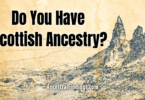Do you have Irish ancestry in your family? You might be surprised how often the answer is yes. Roughly one in ten Americans can trace at least part of their lineage to Ireland, making Irish ancestry one of the most common ethnic roots in the United States. The Irish story in America is one of resilience, hope, and faith, shaped by both hardship and triumph. To understand it fully, you must travel backward through history—across famine, emigration, and the unbreakable pull of home—and learn how to find proof of your own family’s connection.
Key Takeaways
- Irish ancestry is common in America, with many tracing their roots back to Ireland due to historical events like the Great Famine.
- Emigration stemmed from poverty and hardship, driving many Irish people to seek opportunities in the U.S. over centuries.
- Irish immigrants faced challenges but formed strong communities, relying on the Catholic Church for support and record-keeping.
- Identifying Irish roots involves examining surnames, given names, and geographic clusters, along with various essential U.S. records.
- Researching Irish ancestry requires patience and an understanding of complex geography, history, and cultural identity.
A Short History of the Irish People
Ireland’s recorded history stretches back thousands of years. The first inhabitants arrived during the Stone Age, leaving traces in the form of ancient monuments like Newgrange and Poulnabrone Dolmen. By the Iron Age, Celtic tribes had settled the island, forming kingdoms ruled by chieftains and connected by language and myth.
The island’s early Christian period produced saints, monasteries, and scholars whose illuminated manuscripts and missionary work carried Irish influence across Europe. Then came the Norse invaders in the ninth century, founding cities such as Dublin, Waterford, and Limerick.
By the twelfth century, the Anglo-Normans arrived from England, introducing feudal systems and centuries of conflict. Over time, native Gaelic traditions blended with English control and Protestant power. These tensions over land, language, and faith set the stage for many centuries of hardship—pushing millions of Irish men and women to seek new lives elsewhere.
Why So Many Left Ireland
The reasons for emigration changed over time, but poverty was a constant. During the seventeenth and eighteenth centuries, penal laws restricted Catholic land ownership and education. Many Irish families became tenant farmers, renting land they could barely afford.
In the 1840s, disaster struck. The potato blight, which destroyed the primary food source for much of the population, triggered the Great Famine. Over a million people died of hunger and disease, and another million fled the island between 1845 and 1855. This single decade permanently reshaped Ireland and built the foundation of Irish America.
Even after the famine ended, emigration continued for generations. Economic opportunity, religious freedom, and family ties abroad drew people away. Letters from earlier immigrants encouraged loved ones to follow. The flow didn’t stop until well into the twentieth century.
How the Irish Came to America
Most Irish immigrants crossed the Atlantic on crowded sailing ships—often called “coffin ships” because of the terrible conditions. Disease, hunger, and poor sanitation made every voyage risky. Yet hope outweighed fear. They landed in major ports such as New York, Boston, Philadelphia, Baltimore, and New Orleans.
From these gateways, the Irish spread across the country. Many remained in coastal cities, finding work as dockhands, factory workers, and domestic servants. Others joined canal and railroad crews that built America’s infrastructure. By the late nineteenth century, Irish families had moved inland, establishing strong communities in Chicago, Cleveland, Cincinnati, Pittsburgh, and St. Louis.
The Catholic Church became the center of Irish immigrant life. Parishes organized schools, hospitals, and social services. Priests often served as community leaders and record-keepers, leaving behind baptism and marriage entries that now help genealogists connect generations.
Irish Communities in America
Irish immigrants faced discrimination in their early years. Signs reading “No Irish Need Apply” were common, and prejudice against Catholics was widespread. Yet through persistence and solidarity, the Irish carved out a place in American society.
They formed fraternal organizations such as the Ancient Order of Hibernians, built parochial schools, and sent their sons and daughters into the police, fire, and teaching professions. Over time, Irish Americans rose into political life—most famously with the Kennedy family.
Understanding this history is key to tracing your ancestors. Families often clustered in specific neighborhoods or joined Irish societies that kept careful membership rolls. These local connections can point you toward valuable records and help identify the exact parish or county of origin in Ireland.
Identifying Irish Roots in Your Family
Irish heritage often leaves behind clear signs.
- Surnames. Many Irish surnames begin with “O’,” meaning “descendant of,” or “Mc/Mac,” meaning “son of.” But not all Irish names follow that pattern. Names such as Doyle, Kelly, Walsh, and Murphy are deeply Irish even without prefixes.
- Given Names. Certain first names—Patrick, Bridget, Sean, Mary, and Catherine—dominated Irish families for centuries.
- Religious Clues. If your ancestors were Catholic and lived near Irish parishes, check those church registers. Protestant Irish families (often called Scots-Irish) typically worshiped in Presbyterian or Anglican churches.
- Family Traditions. Songs, prayers, or recipes passed down through generations can hint at Irish roots. Even something as simple as soda bread at holidays or the telling of old family sayings might signal a cultural inheritance.
- Geographic Clusters. Large Irish populations formed in Boston, New York City, Philadelphia, Baltimore, and Savannah, then spread westward into the Great Lakes and Midwest.
Sometimes these clues appear subtle. A family that called itself “Scotch-Irish” may actually descend from Ulster Protestants who had lived in Northern Ireland for generations before emigrating to America. Distinguishing between Irish Catholic and Scots-Irish Protestant heritage can open very different research paths.
Essential U.S. Records for Irish Research
Always start your search in America before crossing the ocean. These sources form the backbone of Irish family research:
1. U.S. Census Records
From 1850 onward, federal censuses list the birthplace of each person. Look for “Ireland” noted for parents or grandparents. Later censuses, especially 1900 and 1910, also record the year of immigration and naturalization status.
2. Passenger and Immigration Lists
Ships arriving in New York, Boston, and Philadelphia often included Irish passengers. After 1892, Ellis Island records provide even more detail, sometimes naming the specific town or relative back home.
3. Naturalization Records
Petitions for citizenship filed in local or federal courts may name a birthplace or county in Ireland. Check indexes available through the National Archives and local historical societies.
4. Church Registers
Catholic parish registers in the United States often contain valuable notes about Irish birthplaces, sponsors, or family relationships. Protestant churches can be equally useful, especially for Ulster Scots descendants.
5. Newspapers and Obituaries
Local papers frequently mentioned an ancestor’s “native county in Ireland,” especially in death notices.
6. Military Records
Irish immigrants served in the Civil War and later conflicts. Pension applications often reveal personal origins or affidavits from fellow Irish veterans.
Tracing Back to Ireland
Once you discover the name of an Irish county—or better yet, a parish or townland—you can begin research in Ireland itself.
Civil Registration:
Government birth, marriage, and death records began in 1864 for Catholics and 1845 for Protestant marriages. Many are freely searchable online through IrishGenealogy.ie.
Church Records:
Catholic parish registers, covering baptisms and marriages from the 1700s onward, are digitized at the National Library of Ireland. For Protestant records, check the Representative Church Body Library in Dublin or the Public Record Office of Northern Ireland (PRONI).
Griffith’s Valuation (1847–1864):
A property survey listing nearly every household in Ireland during the mid-nineteenth century. It bridges the gap left by lost census records and helps pinpoint ancestral homes.
Tithe Applotment Books (1820s–1830s):
Earlier tax records naming landholders and occupiers—another substitute for missing censuses.
Estate Papers:
If your ancestors were tenants on a large estate, landlord records may still exist. They often list leases, rent rolls, and correspondence.
Poor Law and Workhouse Records:
These heartbreaking archives can reveal families affected by famine and poverty, sometimes listing admissions and emigration assistance.
Understanding Irish Geography and Names
Irish geography can challenge even seasoned genealogists. Each county divides into baronies, civil parishes, and hundreds of tiny townlands—some just a few acres wide. Many places share identical names in different counties.
Spelling variations complicate matters further. A townland called “Ballymore” might appear as “Ballimore” or “Ballymoor” in different documents. Likewise, surnames often changed spelling after immigration. Always search with flexible spellings and keep maps handy when working with Irish records.
Gazetteers such as Lewis’s Topographical Dictionary of Ireland (1837) or the Placenames Database of Ireland (Logainm.ie) can help identify exact locations mentioned in old documents.
Religion and Record-Keeping
Religion shaped Irish record survival. Catholic registers survived mainly because they were held locally rather than stored in government archives destroyed in 1922. Protestant and civil records were often centralized in Dublin and lost during the Civil War explosion at the Public Record Office.
For Northern Ireland, PRONI in Belfast houses many surviving registers and census fragments. Always determine your ancestor’s denomination before searching—it dictates where to look.
The Legacy of Irish Culture in America
Even families that have been in the United States for two hundred years still carry traces of Irish culture. The love of storytelling, music, and faith traveled easily across the Atlantic. From Irish dance and ballads to parish festivals and political activism, descendants have preserved echoes of the homeland.
Understanding these cultural layers enriches your genealogical search. Behind each document lies a person who carried language, memory, and identity into a new world.
Encouragement for Researchers
Irish genealogy can be challenging because of lost records, repeated names, and complex geography. Yet persistence pays off. Modern digitization projects, DNA testing, and online archives have opened doors that earlier researchers never dreamed possible.
If you hit a dead end, study local history. Learn about the famine years, emigration societies, and chain migration patterns. Sometimes understanding why people left helps you see where to look next. Every discovery, even small, connects you more deeply to the story of a people who refused to give up.






